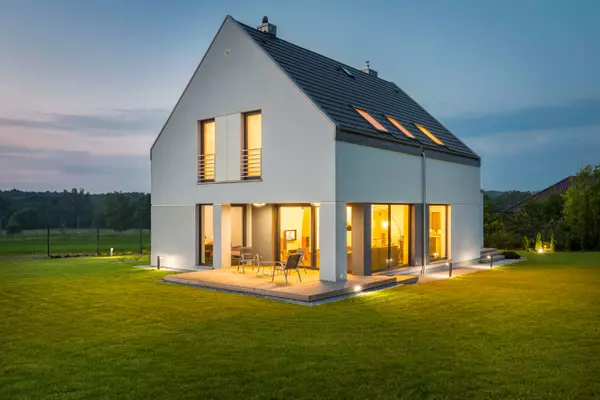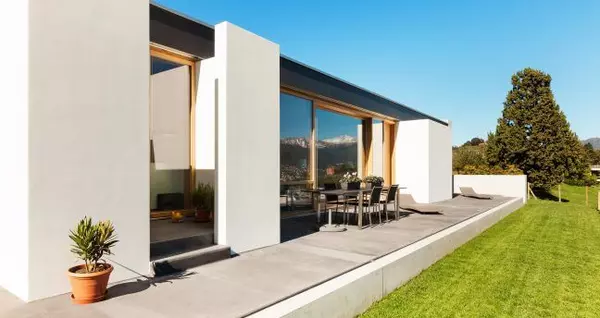Affordable housing savior, or neighborhood destroyer? Meet the developer behind San Diego’s biggest ADU projects
To many critics of a generous backyard-apartment incentive San Diego is poised to rein in, most of the problems with the controversial program trace back to one man — a local developer named Christian Spicer.
Spicer and his investors, they say, are responsible for scores of large-scale projects that defy common understandings of what an accessory dwelling unit, or ADU, is supposed to be.
Spicer’s development team has spearheaded two separate projects that each put more than 100 ADUs on a single site. They’re responsible for several others with more than 20 ADUs each.
To city officials, these projects are outliers that nobody intended or foresaw. Last month, they moved to prevent such projects by scaling back the incentive to cap the number of units allowed.
To critics, the projects are a perhaps inevitable result of a misguided local incentive Spicer exploited — a program that went beyond what state law allows to let property owners build a potentially unlimited number of ADUs.
But to Spicer, the projects are a responsible, by-the-book response to San Diego’s shortage of affordable housing — “building within the city’s policies to help address the region’s housing crisis,” he said.
Only a property manager as recently as 2019, Spicer has quickly become the city’s most prolific ADU developer while building a company, SDRE, that now has more than 50 employees, with separate wings devoted to homebuilding, general contracting and design and engineering work.

Spicer told the The San Diego Union-Tribune this week that he became focused on the city’s ADU bonus after careful analysis uncovered its enormous potential.
He understands why some of his projects have raised concerns. But he thinks the city’s ADU incentive is an important policy to help create more homes in a region that sorely needs them.
“The homes we build benefit everyday San Diegans, like working families, young professionals, seniors looking to downsize and others who are simply trying to find a place to live in the city they call home,” he said in a prepared statement. “We work to design thoughtful homes while helping address the real housing shortage San Diego faces.”
“We have always followed the city’s policies and guidelines and will continue to do so as new rules come into effect,” he added.
A generous incentive
San Diego’s incentive, created in 2020, allows property owners to build bonus ADUs in areas near transit with good jobs and other resources. For every ADU they’re willing to build that is deed-restricted for low- or moderate-income tenants, they can also build one bonus ADU and charge market-rate rent for it.
The only significant limitation has been that property owners can’t exceed the maximum square footage allowed per acre — called the floor-area ratio — for the particular zone.
On ordinary shaped lots, the incentive has typically worked well. But on larger, oddly shaped lots that curve and meander, developers like Spicer found ways to fit dozens of ADUs.
When the City Council voted last month to rein in the incentive, council members said they were motivated by projects like Spicer’s, and by public outcry over how opponents felt they would hurt neighborhoods.
“I think everyone in this room seems to agree that a 20-, a 50-, a 150- or a 750-unit project is not what was ever intended,” Councilmember Kent Lee said.

City officials stress that exploitation of the incentive has been rare. Of 4,308 projects that took advantage of the incentive from 2021 through 2024, only 51 had between four and six ADUs, and only 29 had more than seven.
But that only counts projects that have already been built. Many other large projects have been approved but not yet built, including the two with more than 100 ADUs each that Spicer is handling.
Another local ADU developer, Daniel Shkolnik, praised the city’s bonus program last week as a crucial way to spur construction of workforce housing in neighborhoods where it’s hard to build new projects.
“We recognized the power of the program to move the needle,” said Shkolnik, who has built upward of 20 projects involving bonus ADUs.
Although he’s faced criticism from people living near some of his projects, Shkolnik has mostly escaped the aggressive backlash that Spicer has faced, with angry residents calling him out by name at City Council meetings and calling him greedy or unscrupulous.
Shkolnik has mostly avoided such treatment, perhaps because his projects have far fewer ADUs than many of Spicer’s.
“We felt we should be the stewards of responsible development,” Shkolnik said. “It was most important that we didn’t create projects that stuck out.”
Housing advocate Saad Asad said he understands the backlash against large-scale ADU developments, such as ones with three-story buildings critics call “granny towers” — a riff on the “granny flat” nickname for ADUs.
While not directly criticizing Spicer, Asad said what city officials and supporters of the city’s ADU bonus incentive envisioned were smaller projects, typically something like six ADUs per property and 10 to 15 ADUs at most.
“No one was expecting 120 units,” said Asad, a spokesperson for the YIMBY Democrats of San Diego County. “There are opportunities to do it the right way.”

But he added that large ADU developments also help counteract notoriously prohibitive zoning in San Diego, where nearly 80% of the city’s residential land is zoned for large homes on relatively large lots.
“There are restrictions that prevent low-cost housing from being built in much of the city,” he said.
San Diego’s ADU bonus incentive is allowing for the development of new housing in areas where it’s otherwise rare, he said.
The ADU bonus has accomplished that in many places, but usually on a much more modest scale than Spicer’s 126-ADU Chalcifica project in eastern Pacific Beach.
He’s planning six three-story buildings, each with 18 to 20 units, across two single-family lots that total just under 3 acres: 2596 Chalcedony Street and 4846 Pacifica Drive.
‘He’s only using the rules’
Critics of such projects say large ADU developments damage neighborhood character, make parking more scarce and put pressure on existing local infrastructure and amenities.
Many of those critics are part of a group called Neighbors for a Better San Diego, which opposes the ADU bonus incentive and housing development it says damage neighborhood character and don’t come with the infrastructure upgrades needed to support new residents.
Geoff Hueter, the group’s leader, said the vast majority of the ADU projects that have generated backlash have been handled by Spicer. But he doesn’t think Spicer deserves all the blame, contending city officials created a poorly designed incentive the developer is exploiting.
“He’s only using the rules that the city created,” Hueter said this week.
Other residents have been more critical.
Pamela Beagall, another Neighbors for a Better San Diego member, has compiled a list of ADU projects that she says Spicer or his companies are behind. Spicer said her list appeared to include some properties not affiliated with SDRE but declined to elaborate or share his own list.
Beagall believes Spicer’s projects create problems for sewer capacity and trash collection. “I have concerns with this huge volume of ADUs crammed into these residential backyards,” she said.
Such concerns have often been shared by other residents at City Council meetings, including last month’s.
“These developers are buying up starter homes in older neighborhoods and turning them into investments, not homes,” Stephanie Pfaff told the council, singling out Spicer’s Chalcifica project.
“These large apartment-like complexes are ruining our neighborhoods,” said Lee Townsend.
And Merv Thompson said that although San Diego adopted its incentive to address its housing crisis, the intended solution was making things worse. “You don’t solve a crisis by creating another crisis,” he said.
Spicer, for his part, acknowledged the backlash from residents but characterized it as an ordinary aversion to change.
“For some, change feels like a disruption. For others, it represents an opportunity,” he said. “What we’ve found is that no neighborhood volunteers for changes or feels like it’s the right place for adding housing, but the need exists throughout our region.”

Such backlash first prompted the council in March to demand Mayor Todd Gloria’s planning staff come up with options for a rollback. When those options were presented to the city’s Planning Commission in May, commissioners too agreed something had to change.
“This is not the way I envisioned ADUs would work,” Commissioner Ken Malbrough said. “I want housing, but I don’t want to ruin neighborhoods.”
The city’s incentive has even been singled out by academic researchers.
“Our preliminary research indicates that the San Diego Bonus program is startling in its permissiveness, perhaps more so than any small lot redevelopment zoning reform anywhere in the United States,” said the authors of a July 2024 joint study by the University of Texas and the University of California Berkeley.
What comes next
When the proposed rollback of the bonus ADU incentive reached the City Council last month, council members — even those who had supported the initial program — agreed change was needed.
But they struggled to agree on how exactly to change it, eventually voting 5-4 on new limits to how many ADUs can be built on a single-family lot: four ADUs on lots smaller than 8,000 square feet, five on lots of 8,001 to 10,000 square feet and six on larger lots.

In his statement to the Union-Tribune, Spicer criticized the new cap. But he also said it won’t deter him from pursuing more ADU bonus projects, and he thinks people are misjudging the impact the new rules will have.
“There’s a misconception that these new rules will stop dense development in neighborhoods, but that’s not really the case,” he said.
He predicts that the same number of ADUs will end up getting built — but instead of being concentrated on unusually large lots, they will likely be spread over a greater number of properties. That could mean developers will be forced to buy up more properties to develop ADUs at a large scale, perhaps limiting people’s opportunities for homeownership, he said.
Shkolnik took a more negative view of how the changes will affect ADU development, saying the council went beyond adding guardrails and essentially obliterated the incentive.
“It was a complete walkback from pro-housing policy,” he said. “They severely dialed back a very effective program.”
The rollback still requires a second vote by the council to become final. Postponed at least twice, that vote is now scheduled for Tuesday.
Categories
Recent Posts










GET MORE INFORMATION


